Here’s a list of 9 Clever Things You Should Do When Plants are Young. Following these seedling tricks will help them to grow better and healthy!
Here is a list of some of the most Clever Things You Should Do When Plants are Young. These tricks will enable them to have a headstart and with a healthier growth altogether.
Find out the secret organic fertilizer recipe for productive plants here
Clever Things You Should Do When Plants are Young
1. Removing Suckers

If you are growing peppers, eggplants, tomatoes, or roses, it would be wise to look for suckers and remove them. As they suck out the plant’s vital energy, impacting growth, flower, and fruit production, keeping them away will be a great idea.
Suckers are easy to identify as they have different stems and leaves from the rest of the plant.
Are your plants not blooming? Get the best remedies here
2. Pinching
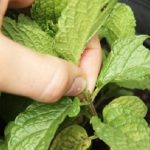
Pinching assists young plants in having fuller growth. The trick is to pinch as close as you can to a leaf node when the plant is young and several inches tall. This tricks the plant to grow its lateral buds.
Herbs benefit the most from pinching. Doing this makes the plants bushier and also keeps their growth in check. You can also do this for scented geraniums, coleus, impatiens, salvia, snapdragons, petunias, and marigolds.
Avoid pinching sunflower, campanula, cockscomb, delphinium, and dill.
The University of California has excellent information on it here.
3. Bottom Watering
Bottom watering is a process where you place the pots in a sink or tub for a few minutes. The bottom holes in the pot allow the water to soak into the soil without over-saturating the growing medium.
It is the best way to prevent the disturbing of roots of young plants, and to reduce the chance of overhead and over watering and helps the seedlings develop a healthy root system as the water gets evenly distributed in the growing medium.
This helps the plant to grow strong and healthy from the young stage.
Learn how to bottom water your plants here
4. Provide a Sturdy Support
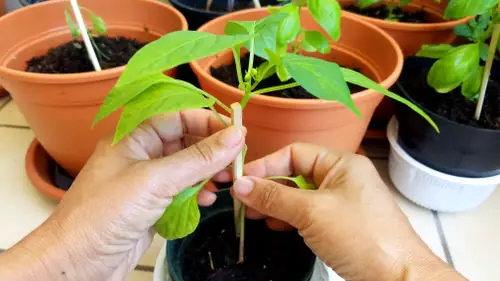
At an early stage, plants need sturdy support that helps them with good balance. You can use bamboo, wooden, or plastic stakes. Pencil or popsicle sticks are also an excellent option for this.
5. Look Over Environmental Factors
Closely examine the surrounding where seedlings are located. Also, keep an eye on light, temperature, water, soil, and nutrients as all these things affect the young plant from germination to flowering.
Before buying, do thorough research about the particular plant’s specific needs.
6. Double Pot
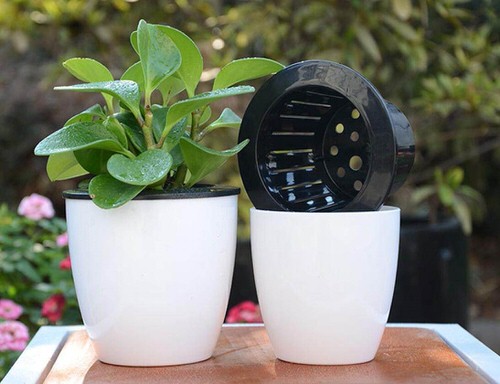
Allow the plant to acclimate and become familiar with its new surroundings. For this, let it stay in the pot in which it comes from the garden center.
- Instead of re-potting, put the plant container inside a 1-2 size bigger and more attractive pot. This will make the plant look beautiful while keeping it safe from a transplant shock.
- This clever idea will help young plants in acclimatizing to the new growing environment before you change their existing pot.
- If the rim of the existing pot is broad and makes it tough to fit inside the new planter, then cut off the thick portion and glide it inside the new one.
- To know how this trick will benefit your new plant, click here.
7. Snip Away Buds and Flowers
While getting plants from a garden center and while transplanting them, it will be a great idea to get rid of the buds and flowers on the young plants, as this will save vital energy, and plant will focus more on root development and establishing itself in the new home.
Check out the secrets to growing more blooms in your garden here
8. Grow Seedlings in Biodegradable Pots
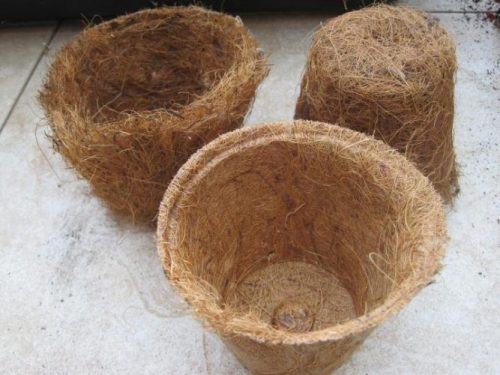
Growing seedlings that don’t transplant well in biodegradable pots is the best way to save them from transplant shock. All you have to do is plant them directly in a garden or a bigger container without the need of removing them from the current pot.
The biodegradable pot will decompose on its own, and the plant will be transplanted in its new home naturally.
Grow certain crops like carrots, beets, turnips, beans, peas, squash, gourds and cucumbers in such pots for best results.
9. Cover them with a Garden Cloche
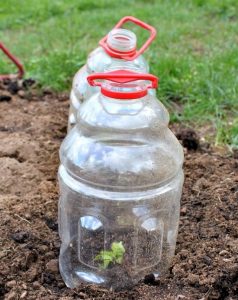
Making a cloche for seedlings acts as a mini-greenhouse for individual plants, saving them from early weather changes, frost, pest infestations and rodent problems. It also keeps the plants safe from winds, dirt, and debris.


